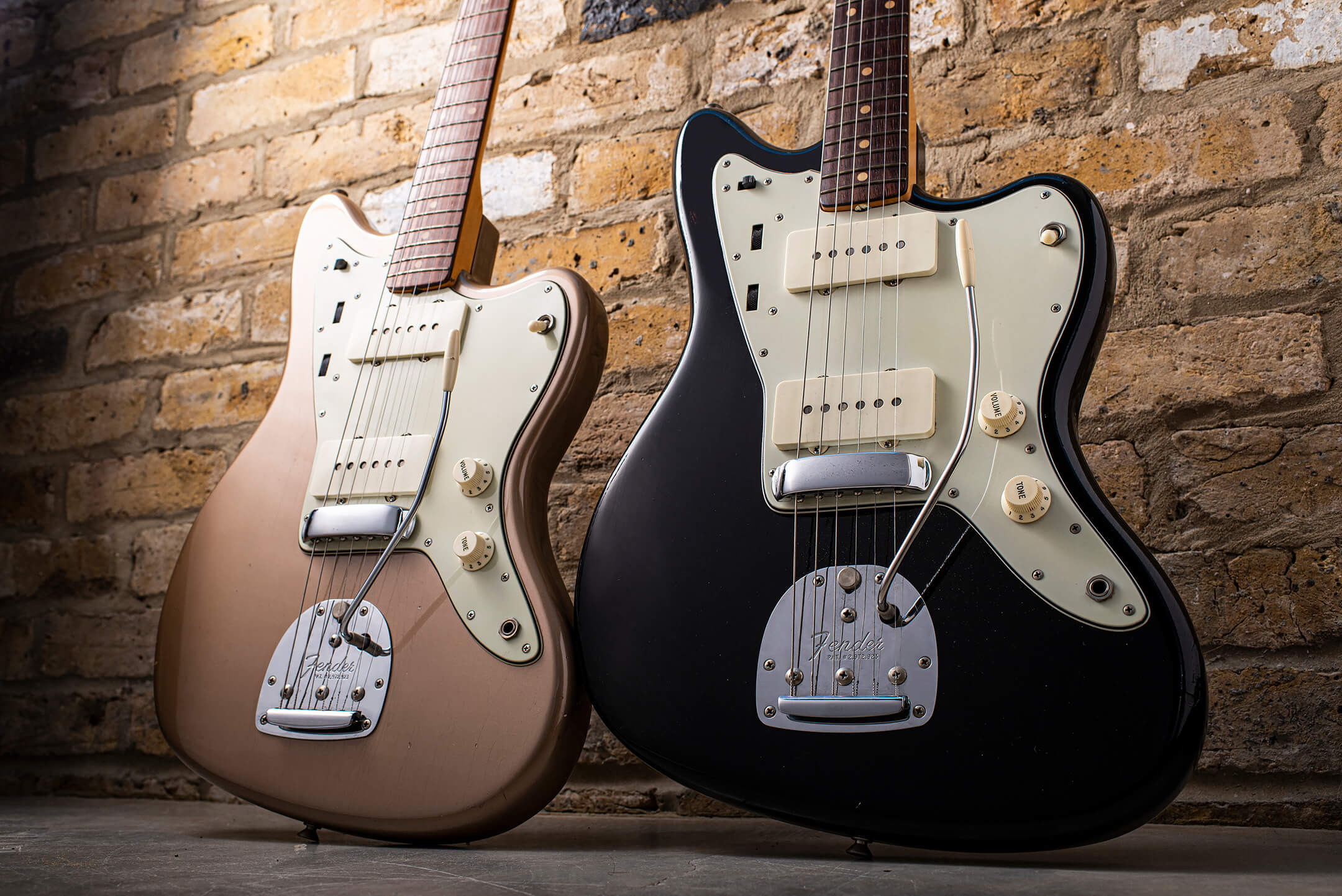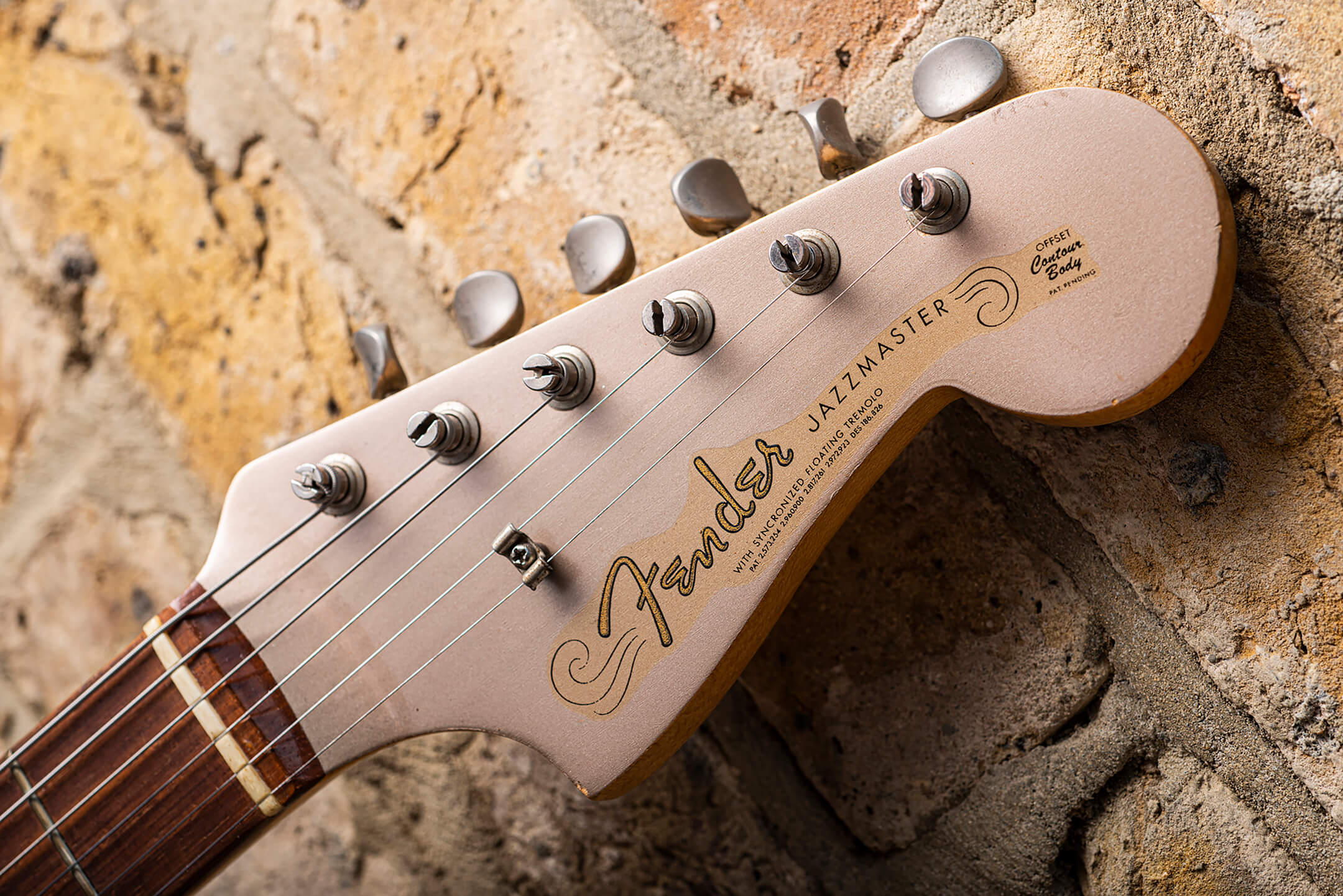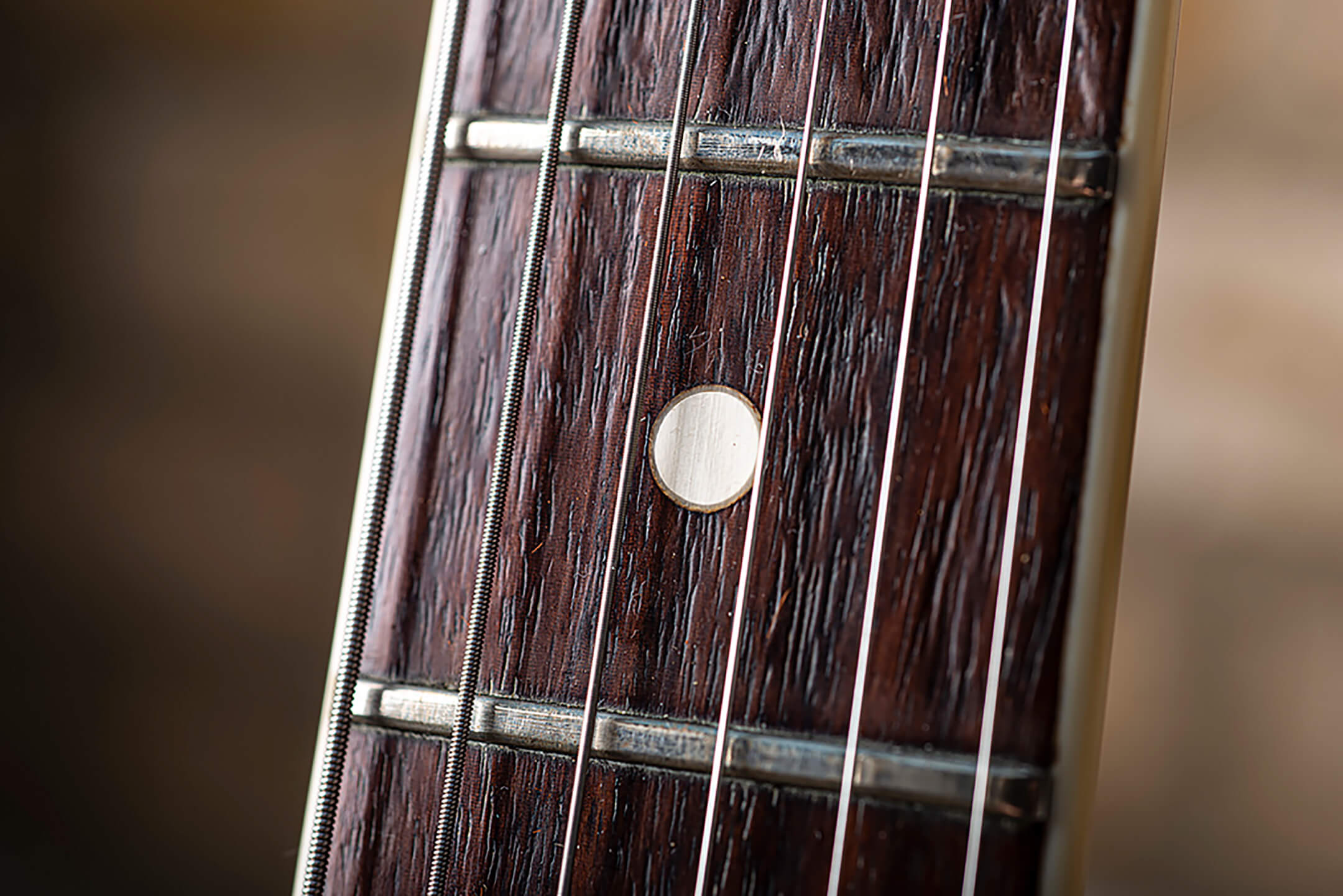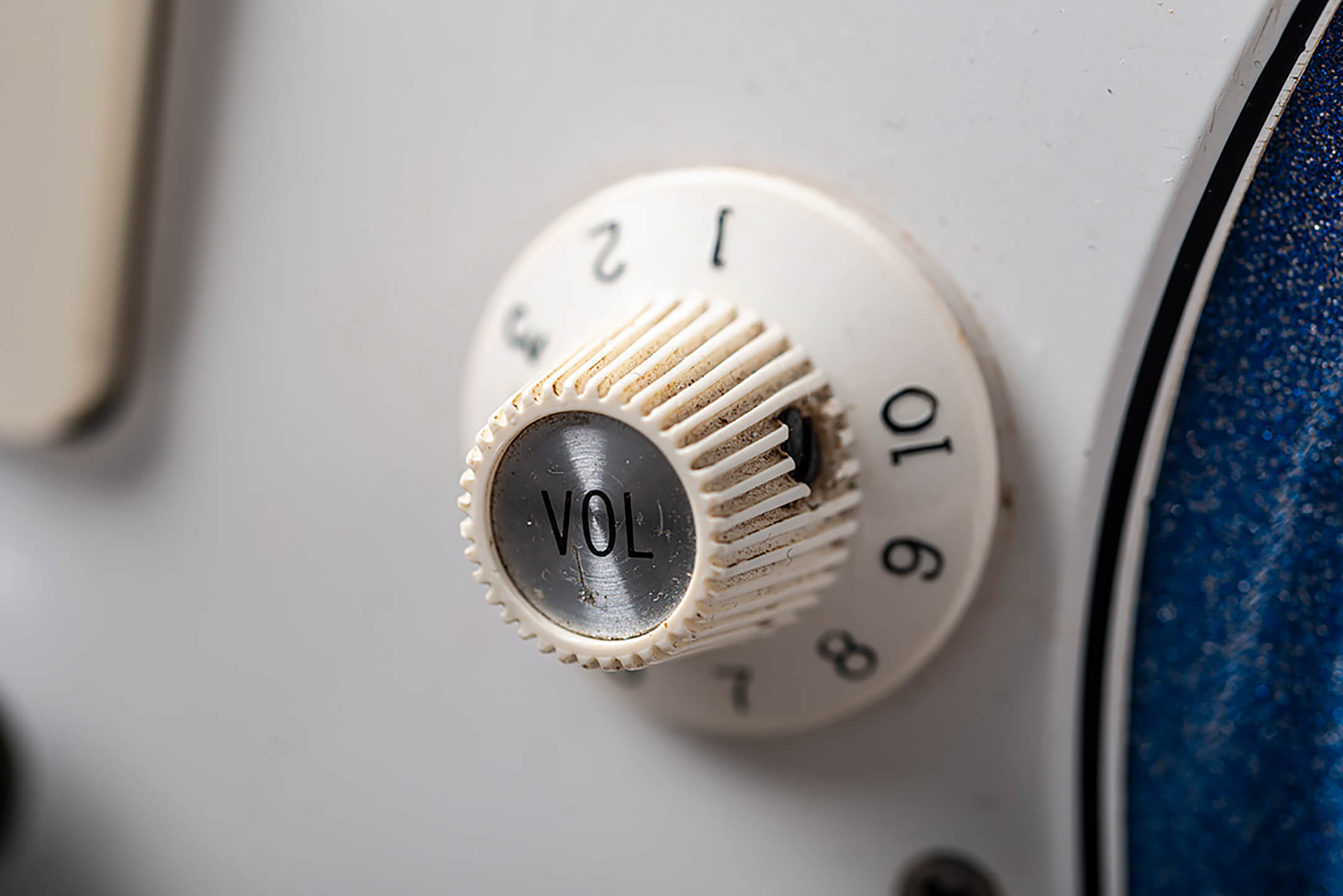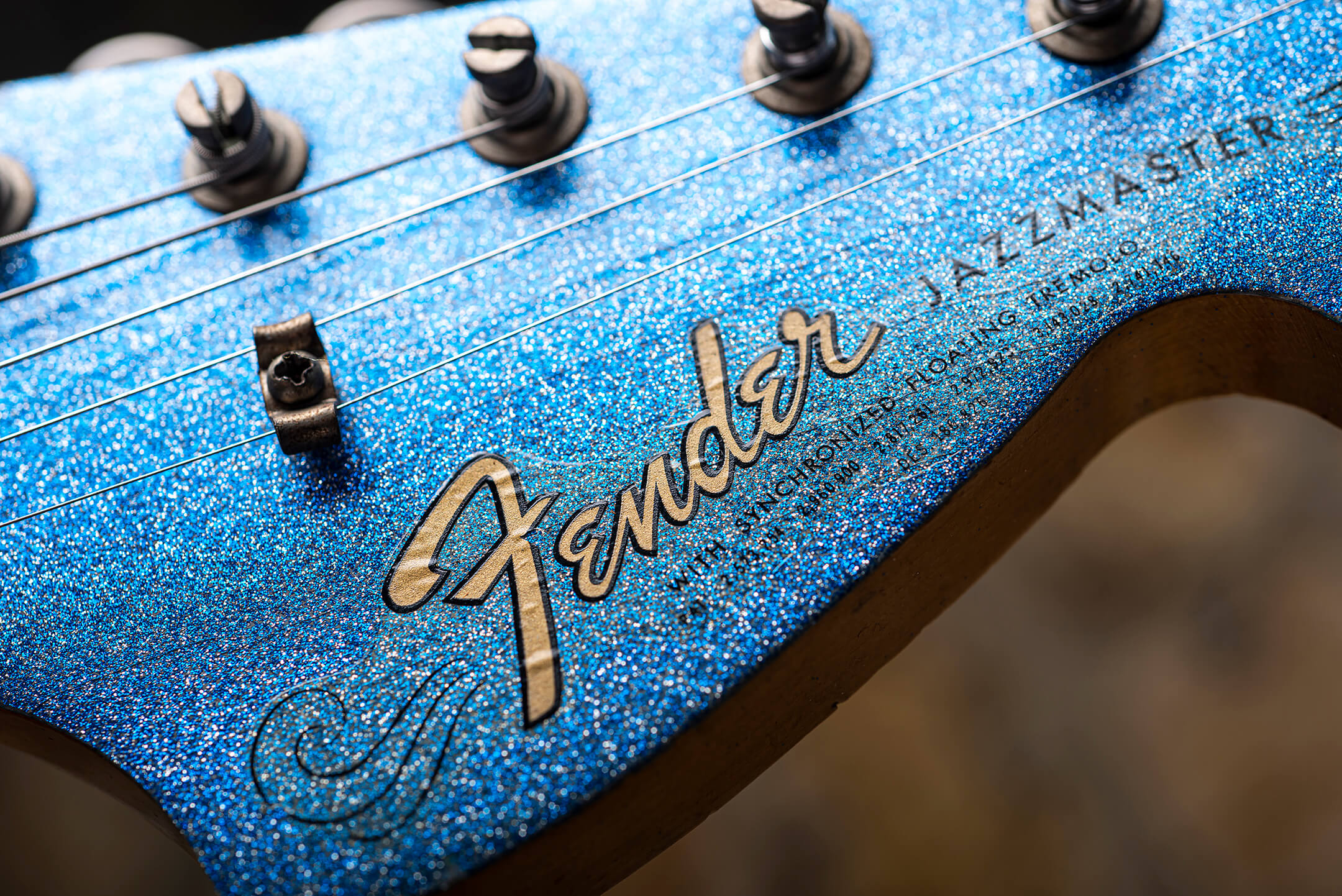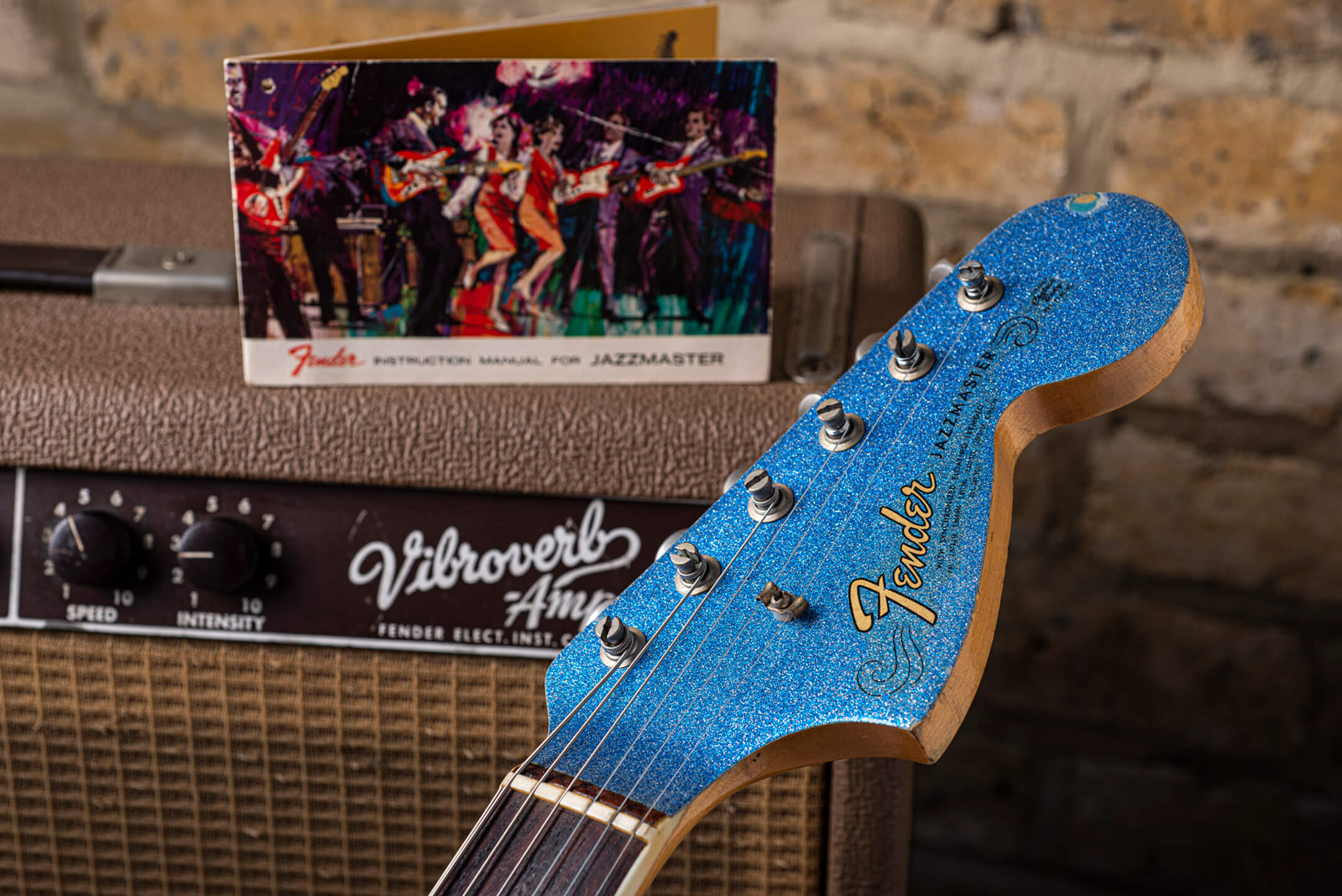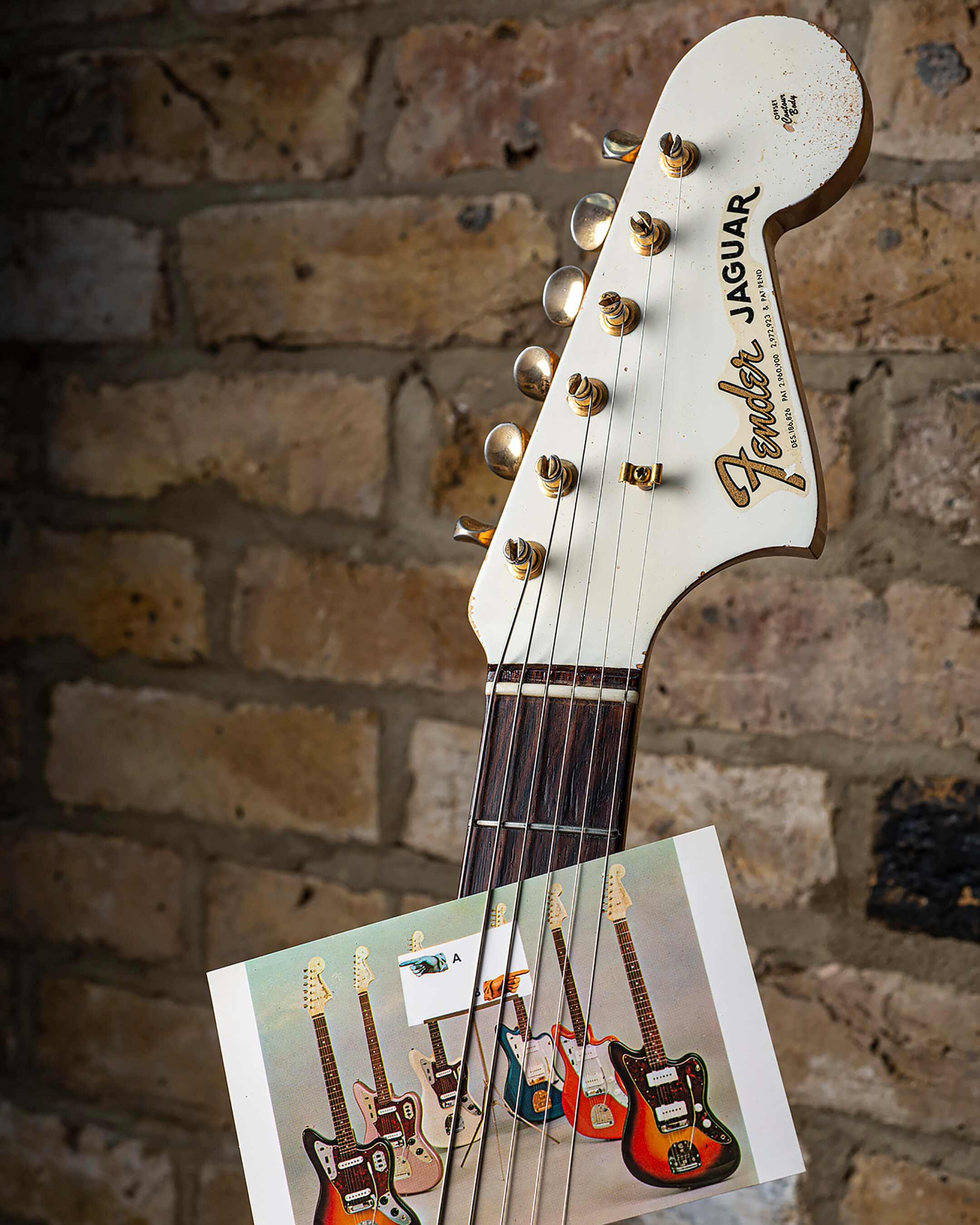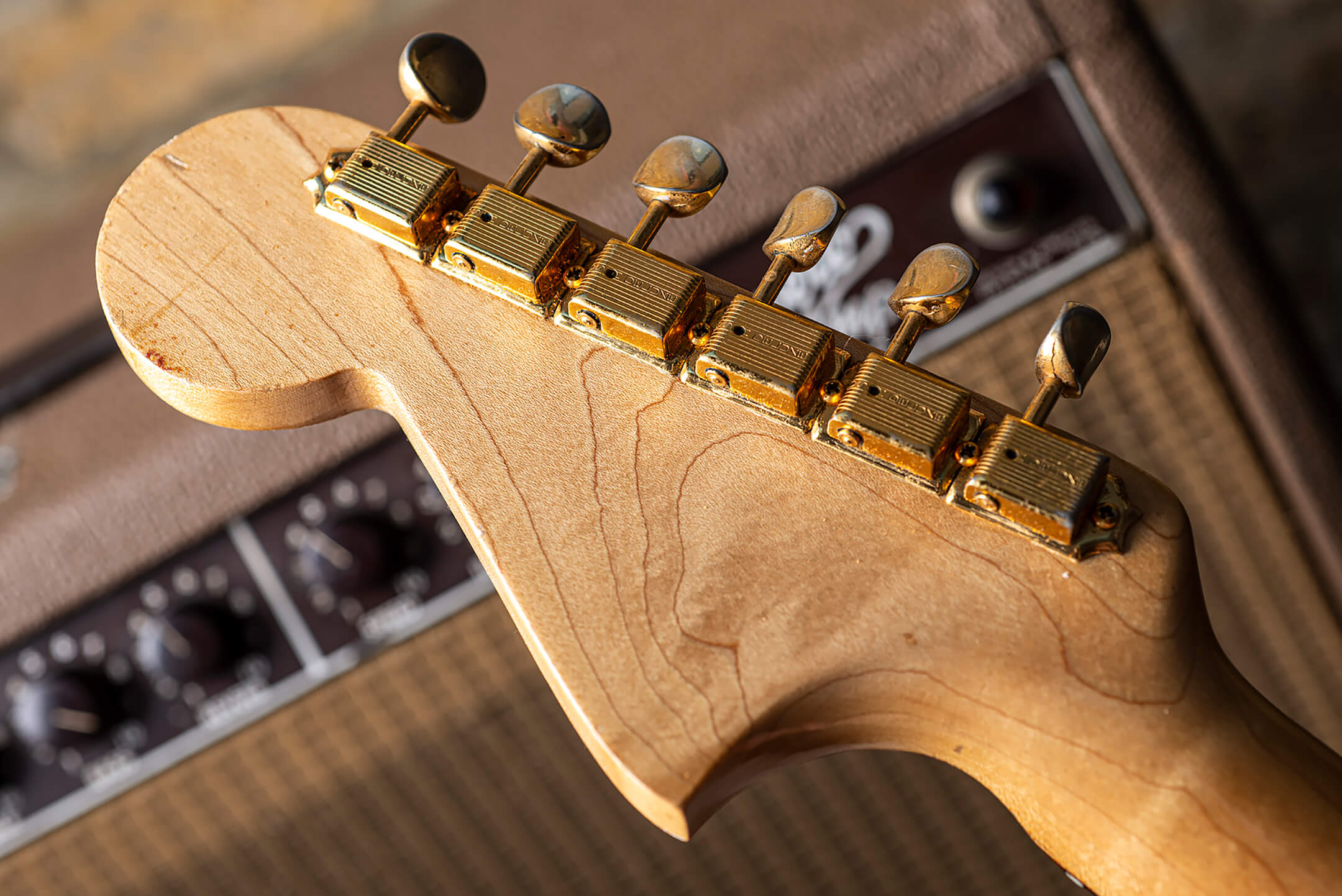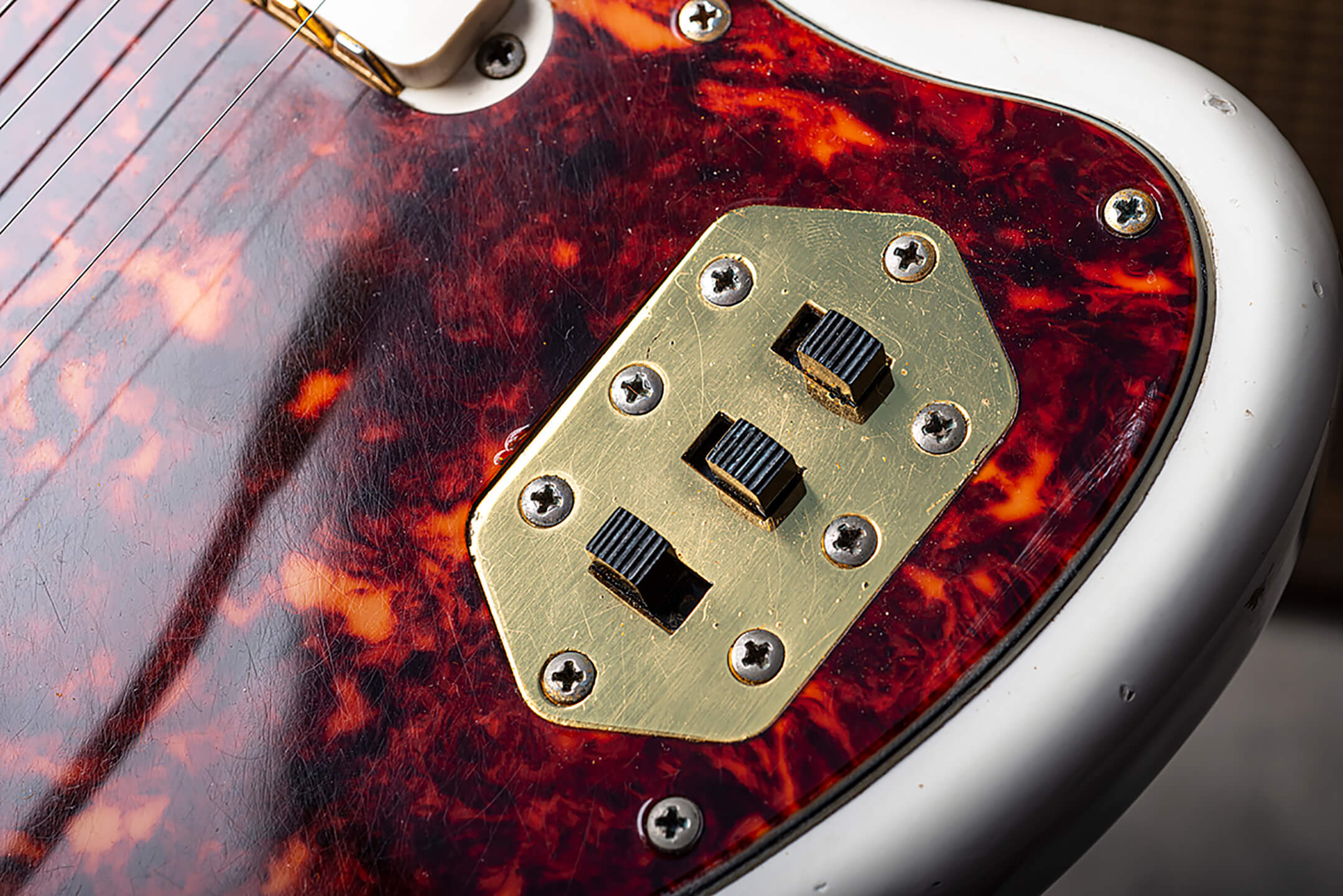Related Tags
The Collection: Martin Kelly and Phil Hylander
Two of the UK’s foremost collectors of vintage Fenders share their stories and buying advice as we enter a candy store bursting with custom colours.

All images: Eleanor Jane
The American motor vehicle’s impact on popular music and guitar culture simply cannot be overstated. From Robert Johnson’s Terraplane Blues to Ike Turner’s Rocket 88, Delta blues and R&B trailblazers named their songs after the futuristic metal machines rolling off the production lines to the north in Michigan. By the end of the 1950s, rock ’n’ roll singles such as Eddie Cochran’s Somethin’ Else were distilling the prevailing teenage angst of the era: you had to get the car or you could forget about getting the girl.
By the 1960s, the assembly line principles of the automotive industry had been applied to the recording process and the products of the Motown hit factory began to dominate the charts. Cars and motorcycles had driven their way into the fabric of pop and would remain there for many decades, with their influence extending to musical instrument design and even the names of the instruments themselves.
“The world was coming into colour in the 1960s, and the guitars were going to match the mood” MARTIN KELLY
For example, before changing the course of electric guitar history, Paul Bigsby was a motorcycle racer, who worked at the Crocker Motorcycle Company machine shop as the foreman. It was a shared love of Western music and motorcycles that saw Bigsby and Merle Travis become firm friends and, well, you know the rest. Later, in 1962, as Fender debuted elegant new instruments borne out of the collision of surf music and hotrod car culture, Gibson sought to challenge its primacy in the solidbody market by turning to retired automobile designer Ray Dietrich. Dietrich’s past designs included the bubble-topped Lincoln Presidential Limousine used by Dwight Eisenhower, and it was Dietrich who conceived the Firebird’s radical lines at the behest of Ted McCarty.

The Firebird was launched in 1963 in a rainbow of custom colours first sported by Pontiacs, Buicks and Oldsmobiles on the nation’s new highways – an idea borrowed by Gibson from its modernistic West Coast rival. Fender’s custom colour chart had officially launched in July 1961 but, back in 1956, Stratocaster and Precision Bass spec sheets already declared that the instruments were available in a DuPont Duco colour of the player’s choice for an additional five per cent. And customer requests for custom finishes on Fenders dated as far back as the early 1950s.
For all the romance of custom-colour instruments and the passport they offer to a defining era of pop culture, for most of us, encounters with an original Fender in Sonic Blue or Fiesta Red are rare. And while the opportunity to see multiple custom-colour instruments under the same roof is rarer still, as luck would have it, we know a guy who knows a guy…
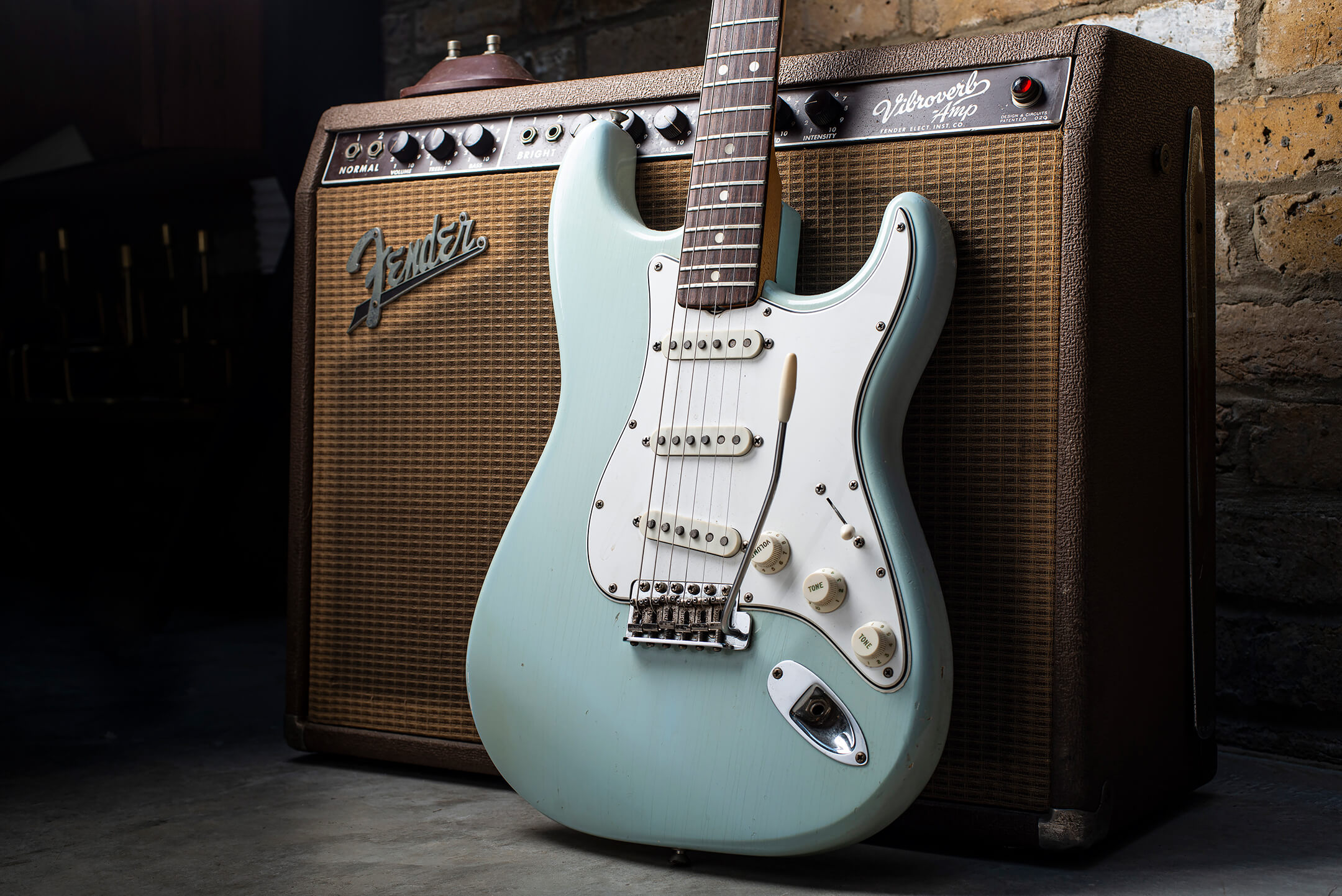
Getting the bug
Students of all things Fender will recognise the name Martin Kelly. Martin is best known in the wider world as the MD of Heavenly Films and Heavenly Songs, but back in 2010, he teamed with his filmmaker brother Paul and guitar historian Terry Foster to author Fender: The Golden Age 1946-1970. Few tomes stir up such unadulterated gear lust among Fender fans as The Golden Age, and one such fan is Phil Hylander – the writer and producer of the acclaimed documentary rock show Seven Decades.
“to be able to buy the guitars I’d been window-shopping was one of the main motivators for me to get a proper job!” MARTIN KELLY
Martin and Phil bonded over vintage guitars and are currently working on a Rickenbacker book with unparalleled access to the company archives and new photography of all of the Rickenbackers owned and played by The Beatles. We’d been cooking up a plan to visit Phil and shoot some of his guitars for some time and it was Phil who hit upon the idea of inviting Martin to join us and assemble a breathtaking array of custom-colour Fenders from their personal collections.
Before delving into the instruments themselves, we’re interested in how Phil and Martin’s respective love affairs with collectible vintage guitars began.
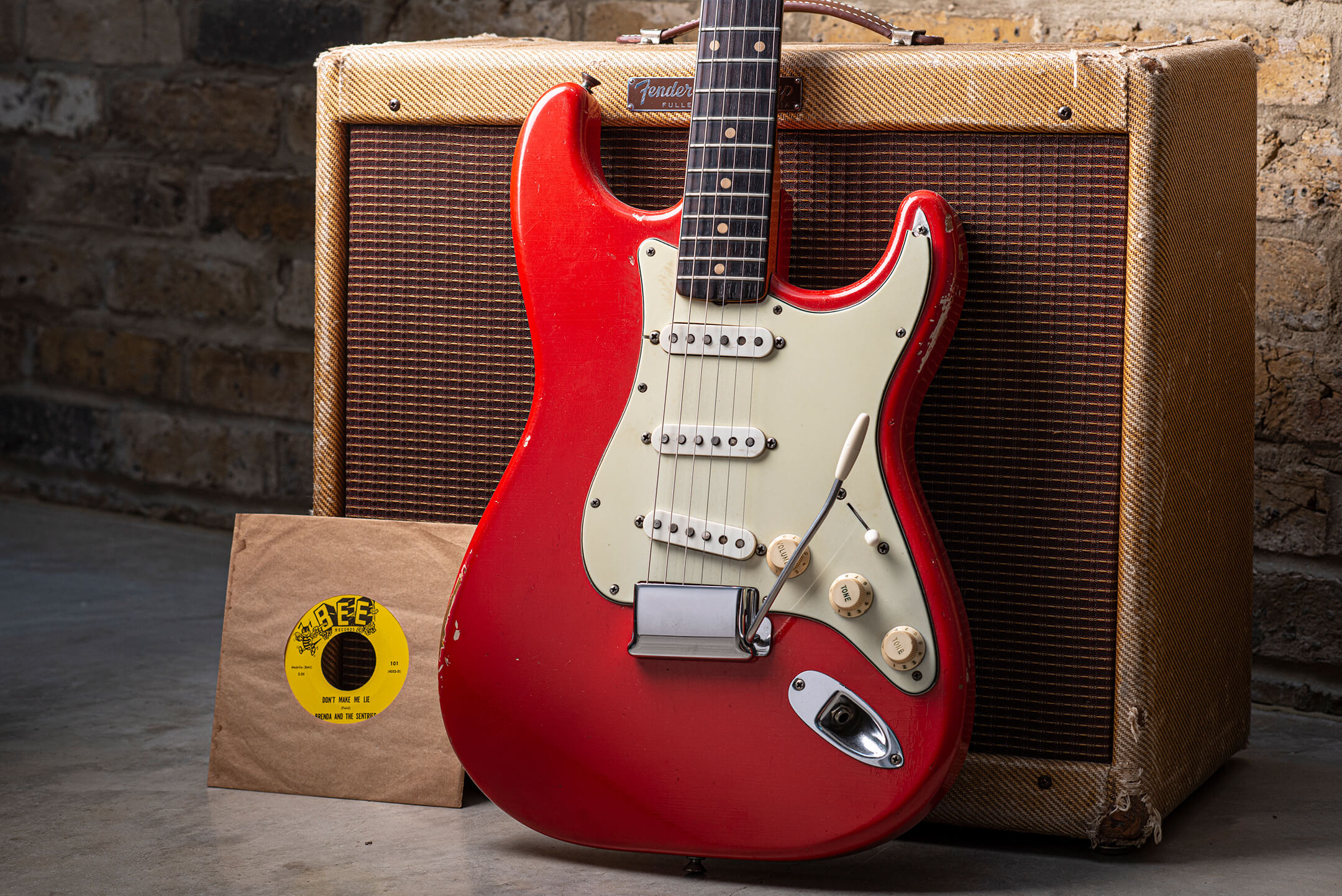
“Although it’s a chicken-and-egg thing,” says Phil, “my collection began very much informed by the chapters of my show. So I knew particular bits of the roadmap and it was informed by a setlist of 70 years of music in my head! But bit by bit, I became interested in oddball rarities. I always used to take pride in owning guitars you wouldn’t mind trashing, which I think is the right and just approach! But being friends with Martin has unfortunately given me the illness of collecting guitars for their rarity and mintness.”
For Martin, it goes further back. “It was when I was a kid and first got into bands and stuff,” he says. “Me and my brother lusted after Fenders but we couldn’t afford them. A pre-CBS Strat was £500-600 and that was a lot of money. So I started collecting Vox guitars, which were £80 or £100 for a Teardrop or a Phantom. I think it was one of the main motivators for me to get a proper job, to be able to buy the guitars I’d been window-shopping!”

Sonic boom
The first of many guitars to be removed from its case – original, naturally – is a 1965 Stratocaster in Sonic Blue. From the Seven Decades collection, this was a one-owner guitar before Phil obtained it via ATB Guitars in Cheltenham. Like Surf and Foam Green, Sonic Blue is often confused with its close cousin Daphne, and even this Strat’s long-time custodian thought it was Daphne Blue when he received it at the age of just 10 in Irvington, New Jersey in 1965.
Decades later, discolouration of clear coats over time and fading can make it even harder to differentiate between the two. “They didn’t always have clear coats,” says Martin. “They usually did, but custom colours didn’t always have a clear coat. Daphne Blue is a lot rarer than Sonic Blue. But I think people just really like Sonics so they go after them. It’s got a high premium – it’s like Fiesta Red, it’s a very special colour. It’s got that milkiness.”
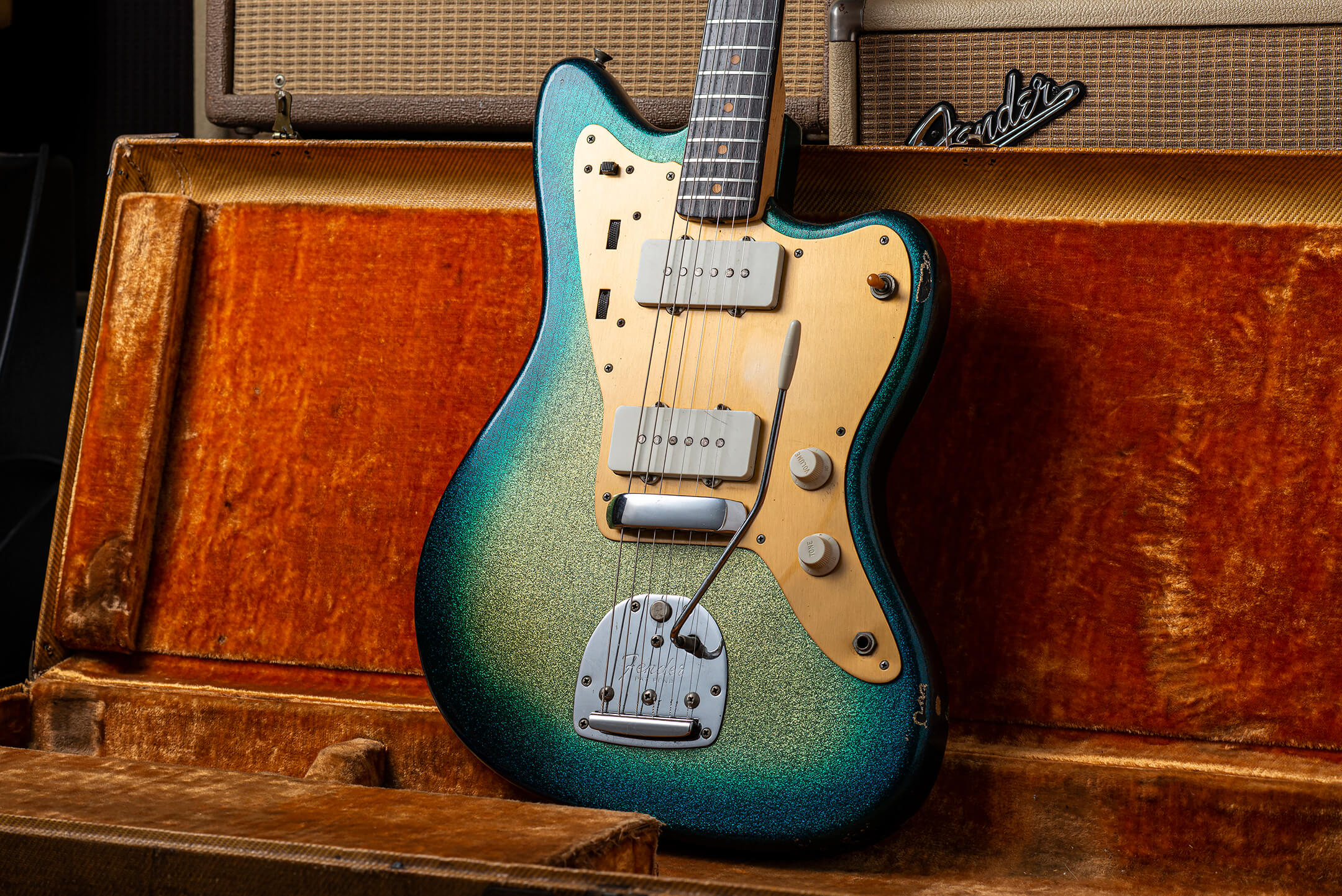
Martin pinpoints 1962 as a pivotal year for custom-colour Fenders. “1962 was the big year,” he says. “Offsets were being pushed and the coloured headstock became standard on offset models. Prior to 1962, headstocks were very rarely matched. The world was coming into colour in the 1960s and the guitars were going to match the mood. That said, on the line, the majority were still coming out in Blonde and Sunburst. They gave it another real push around ’65-66 and reorganised the chart. The 1960s became even more colourful and you end up with things like Wildwood, which were quite psychedelic, and then Paisleys.”
“You have to be buying from someone whose reputation counts and you want to know where the guitar has been for as long as you possibly can” Phil Hylander
There was also the small matter of a bespectacled British guitarist and his red Stratocaster. “It was the offsets that really started the craze but the British demand for red shouldn’t be underestimated,” says Martin. “I have an interview with [Fender’s then director of sales] Don Randall where he said they couldn’t keep up with the orders for red, so that was how the whole Selmer refinish thing came about.
“Before it was a thing in America, you’d have bands here with matching sets of guitars in the same colour. I interviewed a guy called Ted Lee, who told me he’d done about 250 refinishes on Fenders before 1965 – that was in the north of England. The whole Selmer thing is a bit of a misnomer, because shops would get whoever could do it to do it. You could unbolt these guitars and you could spray them very easily. There are deniers of that, but it happened.”
Roman remains
One of the rarest guitars in the room here at Phil’s London home is his 1959 Strat in Roman Red. Over the years, thousands of column inches have been devoted to the colour of Hank Marvin’s original ‘Flamingo Pink’ maple-neck Stratocaster but Martin is convinced that Hank’s iconic guitar was also sprayed Roman Red before it left Fullerton.

“I’ve seen 50s Precision Basses in Roman Red with a gold ’guard. I’ve also seen three Jazzmasters with gold ’guards in Roman Red,” says Martin. “A guitar surfaced with ‘Roman Red’ on masking tape underneath the pickguard and we got a couple of other owners to look under theirs and sure enough, someone else had it, ‘Roman Red’.
“1950s custom colours are very rare indeed. Fender hadn’t standardised it at that point. People were probably asking for a red guitar rather than a particular shade, and Roman Red was what they got. Then the requests for custom colours became more common and I believe Don Randall picked the colours for the first custom colour chart. I’m sure he simply went through all the available car paints and decided, ‘That’s cool, that’s cool’.
“Fiesta Red didn’t officially come in until 1960. I’m pretty convinced that the gold-plated Strat that Hank got was the one on the cover of the 1958-59 catalogue. It would have been specially chosen for the catalogue shoot. When the Shads ordered Hank’s guitar, they wrote to Fender asking for a guitar like the one on the cover of the catalogue. No-one has ever turned up another one. It’s got to be the same one.”
Phil’s Roman Red Strat is an early rosewood-’board ’59 obtained from Emerald City Guitars in Seattle a few years ago, complete with a seven-inch single cut using this very guitar. “I wanted a pre-custom colour chart guitar with a custom-colour finish, as it’s such a rarity,” says Phil. “It was owned by a guy called Carl Bukowski, who played in various iterations of a band called the Sentries.”
Shelling out
Although Martin and Phil both have jaw-dropping collections, there are still combinations of hues and model years that prove elusive. “I like Shell Pink,” says Martin. “It’s so rare. I know of a Shell Pink Jazzmaster that I covet! It’s a bit of an enigma, that colour. I’ve only seen two. I’ve seen one Strat, in Japan. And I’ve seen the one Jazzmaster that’s in our Fender book. I know where that is and I keep saying, ‘One day’.”
But what about the risk of buying something that’s fake? Do these experienced buyers have any tips to offer those of us who are looking to dip our toes into the vintage market but worry about getting ripped off? “It really is buyer-beware on anything these days,” warns Martin. “One of the reasons that I like the really clean ones is because they’re much harder to fake. When a guitar is really clean, you can easily spot if it’s a real finish, whereas with a really distressed, knackered guitar, it’s harder to spot. It’s the same with antiques – a lot of fake antiques are distressed. It’s a good way of covering your tracks!
“Say it’s a Jazzmaster, if it’s got a real green guard – you can tell when it’s a real nitrate guard – they only came on custom colours so you are halfway there. But with a Strat, they all came with green guards. One of the benefits of doing the book was that you held so many that you got a vibe for it.”
“A lot of it is experience,” admits Phil. “Having not seen the numbers Martin has, you have to be buying from someone whose reputation counts. It’s quite hard otherwise, as a civilian. You want to know where the guitar has been for as long as you possibly can. You want to know the origin of the guitar and there’s provenance that predates a time when it was worth faking.
“Like that Blue Sparkle Jazzmaster – we’ve seen it in photos from the 1970s. It’s so unlikely to have been faked between the 1960s and the 1970s. So provenance, I think, is important. When things just appear, it’s actually a bit scary. It’s the same with cars – you normally want to know where it’s been for the past 15 or 20 years. The fewer hands that have tampered with it, the better!”
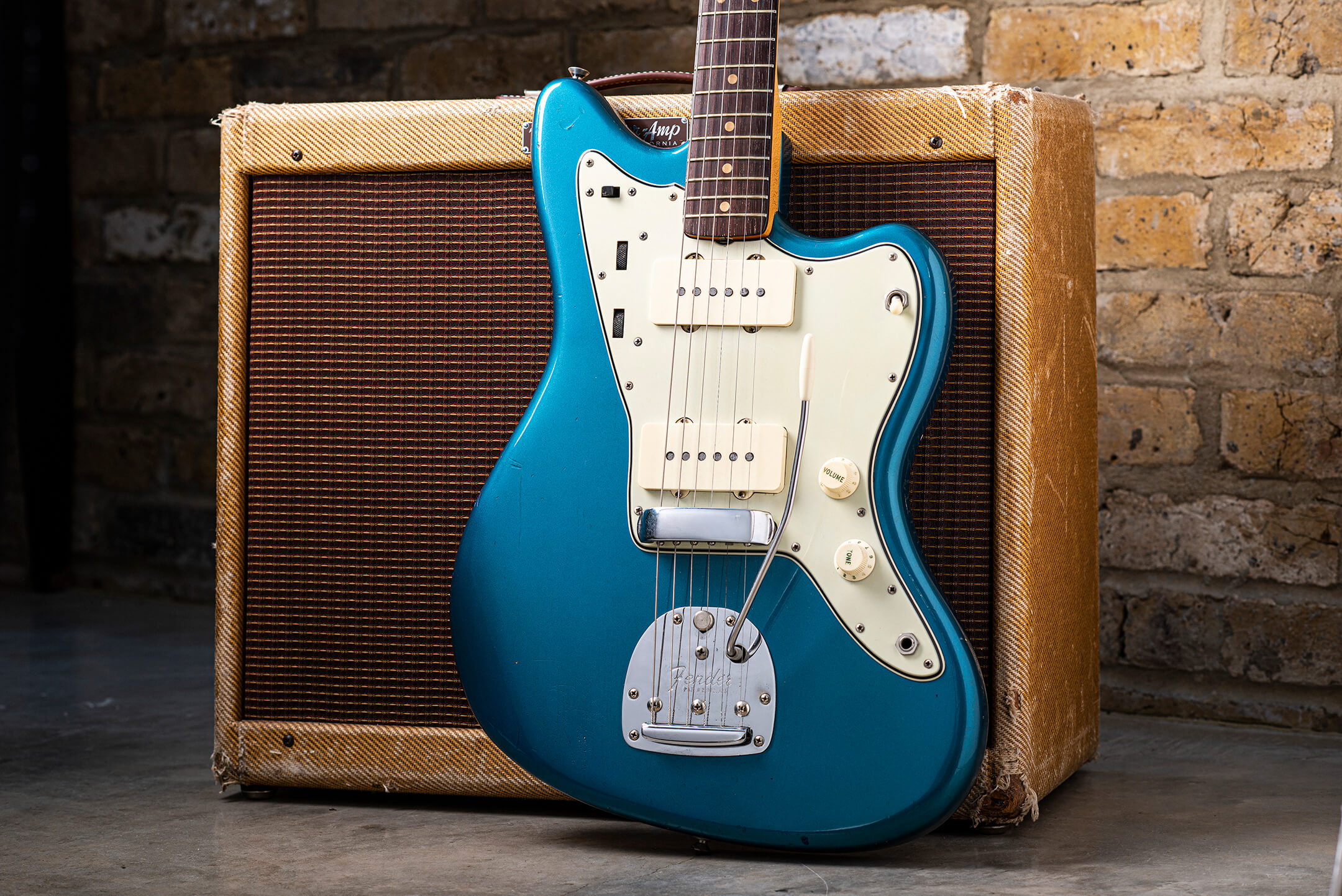
We wonder how Phil or Martin would react to a part that’s gone astray being replaced with a period-correct part that’s not original to the guitar. “I want all the parts to hang together,” says Martin. “You definitely look for that. Sometimes you think, ‘Those knobs look a bit knackered compared to the rest of it’. I want the screws to look right. It needs to be a whole.”
“That doesn’t mean something put together with original parts isn’t interesting but it’s not the same as something that left the factory in one piece,” says Phil. “I’ve just sold a Blackguard that didn’t have its original pickups and it was, I think, better with the modern pickups it had. I wouldn’t have felt any greater psychological reward putting some original pickups in it because the original pickups wouldn’t have been native to the guitar.
“At that stage, you might as well have pickups that sound great. That’s how I feel about ownership, anyway. If it’s not right, it might as well be great! But you can never be sure of where a whammy bar has come from. There’s always a little bit of jiggery-pokery. It’s okay if the jewellery isn’t original as long as it’s been replaced with a period one. But a guitar does feel like it wants to be in its case.”
Ah, the case. Only in the past few years have we become aware that vintage guitar cases are a rabbit hole unto themselves. “It’s weird how things like that have become so essential,” says Martin. “When I was first getting into guitars, people used to take the piss out of me for wanting the original case! But now it’s a given.”
When all is said and done, the rules seem simple. Guitar a funny colour? Definitely don’t paint over it. And don’t mislay the whammy bar either. Even if it’s broken, don’t throw away the case. And that leaflet in the pocket inside the case? Definitely don’t lose that, it could end up being worth much more than you realise.
Follow Phil Hylander on Instagram @sevendecades and Martin Kelly @voxcollector.

